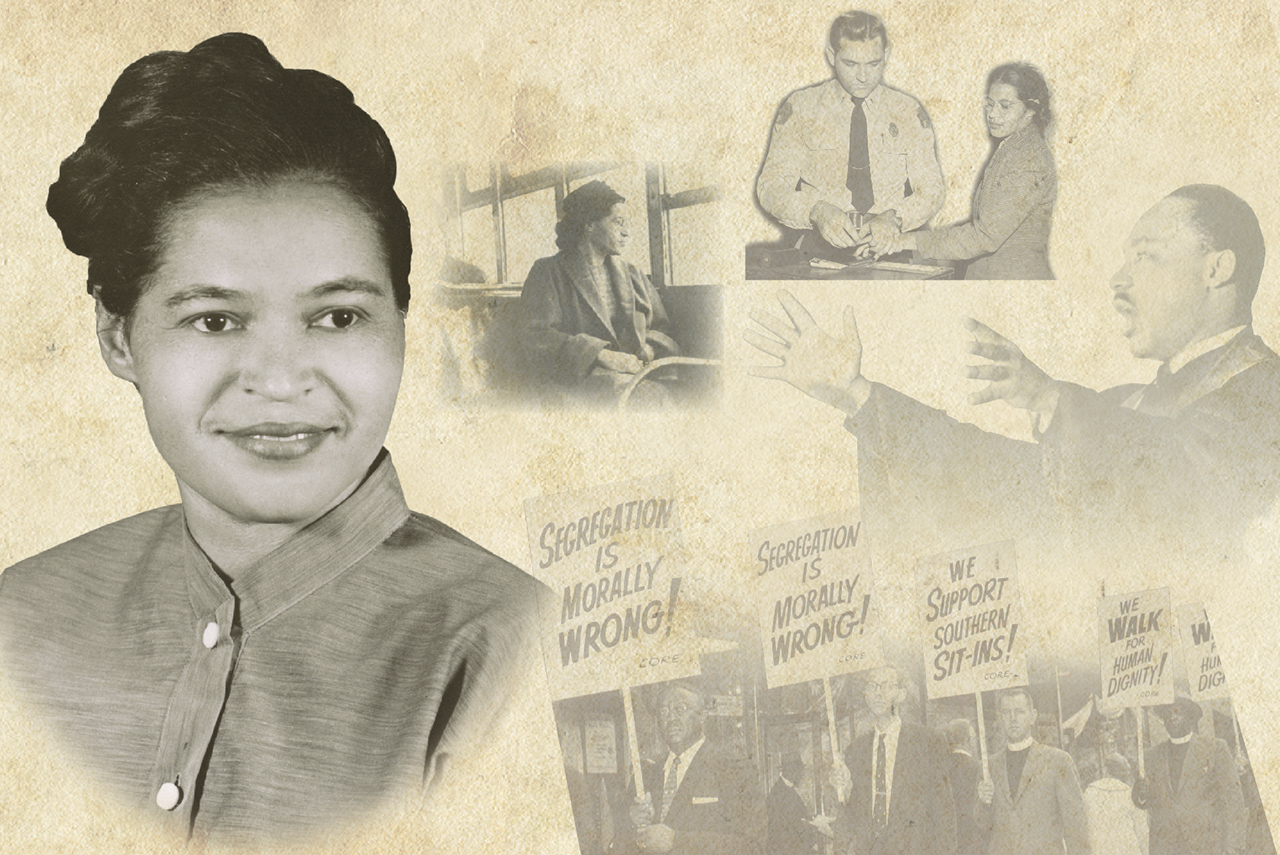Tucked away in Watterson Towers, between the dining center and residence hall, is the newly renovated Rosa Parks Conference Room named after the courageous activist who refused to give up her seat on the bus and became the focal point of the Montgomery bus boycott.
What was once just a room with a handful of plaques scattered across the walls, now has a magnificent mural highlighting the civil rights era.
Donald Reed, associate director of University Housing Services, was instrumental in helping complete the mural project. “We wanted to recognize the role Rosa Parks played during the early stages of the civil rights movement, in addition to telling the story of other civil rights leaders of that time,” he said.
The mural extends along the back wall of the room and recognizes key figures who contributed to what Rosa Parks did when paving the way to a more inclusive, democratic society. “The mural highlights organizations, activists, and politicians from Brown, to the protests like Montgomery, the March on Washington, Selma, to the great legislative victories of the civil rights movement such as the Civil Rights Act of 1964, and the Voting Rights Act of 1965,” said Touré Reed, associate professor of African American history and Rosa Parks Room committee member.
In addition to Rosa Parks, the committee challenged themselves to include other female activists who contributed to the civil rights movement because men were often in the spotlight. “Many of us know Rosa Parks as well as Martin Luther King and Thurgood Marshall,” said Donald Reed. “We wanted to showcase a better balance of men and women on the mural.” He also noted that women were fighting for their rights just 30 years prior to the African American civil rights movement.
As part of the academic mission of the University, the wall was a collaborative effort between academics and student affairs. “We wanted this wall to be educational and for people to look and say ‘Oh, I didn’t know that,’” said Donald Reed. “For example, many people don’t know Martin Luther King’s ‘I Have a Dream’ speech was originally titled ‘Normalcy No More,’ calling on the federal government to pursue full employment policies and raise the minimum wage, which is still at the center of our political discourse today,” he said.
As a result of the renovation, the room now has greater usability for the campus. There is technology available in the room, mirrors for dance groups, and a white board wall. “A lot of students, faculty, and staff use our spaces—so when they are in the space, we hope they will learn something,” said Director of University Housing Services Stacey Mwilambwe, who served on the Rosa Parks Room Committee.
The committee members who have been a part of the Rosa Parks Room transformation hope that visitors will be inspired. “I think many of those who take the time to gaze upon the walls in the new Rosa Parks Room will get something out of it—be it edification or just a warm feeling about the commitment that many staffers at our university have to both education and a fair and democratic society,” said Touré Reed.


